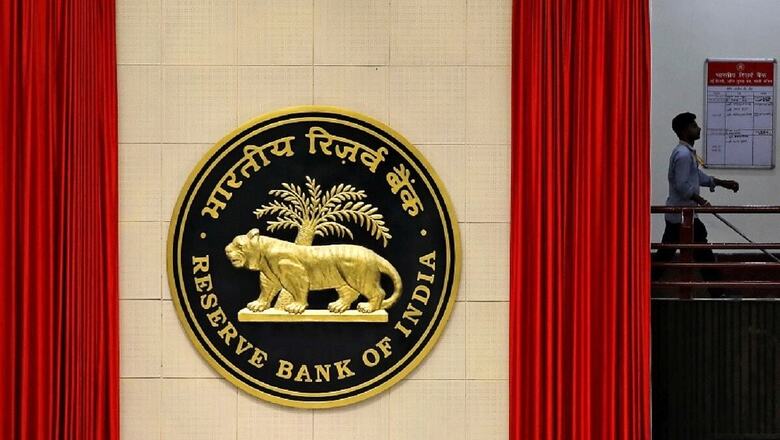
views
The size of the Reserve Bank’s balance sheet, which is reflective of activities carried out by it in pursuance of currency issue function as well as monetary policy and reserve management objectives, has increased by 30.02 per cent in the year ended June 30, 2020, says its annual report. The balance sheet increased by Rs 12,318.88 billion (Rs 12,31,888 crore) to Rs 53,347.93 billion (Rs 53,34,793 crore) during the year ending June 30, 2020, representing a growth of 30.02 per cent, the report said.
The balance sheet of the Reserve Bank plays a critical role in the functioning of the country’s economy. The increase on the asset side was due to increase in domestic and foreign investments by 18.40 per cent and 27.28 per cent, respectively, increase in loans and advances by 245.76 per cent and increase in gold by 52.85 per cent.
On the liability side, the increase was due to rise in notes issued, other liabilities and provisions, and deposits by 21.52 per cent, 30.47 per cent and 53.72 per cent, respectively. Domestic assets constituted 28.75 per cent while the foreign currency assets and gold (including gold deposit and gold held in India) constituted 71.25 per cent of total assets as on June 30, 2020, as against 28.03 per cent and 71.97 per cent, respectively, as on June 30, 2019.
A provision of Rs 736.15 billion (Rs 73,615 crore) was made and transferred to Contingency Fund (CF). No provision was made towards Asset Development Fund (ADF), the report said. Meanwhile, the report also said the currency-deposit ratio at 16.3 per cent at end-March 2020 moved above its decennial average (2010-19) of 15.1 per cent. “During the year, the pace of expansion in currency and a rise of the currency-deposit ratio pointed to a shift in public’s preference towards holding cash in response to the uncertainty caused by the pandemic,” it said. Further, credit offtake from commercial banks was muted during 2019-20, growing at 6.1 per cent y-o-y in a sharp loss of pace from 13.3 per cent a year ago and from a recent peak of 15.0 per cent in December 2018. On financial markets, the report said in India, equity market also fell sharply in sync with global markets with the outbreak of COVID-19. After the announcement of the corporate tax rate cut in September 2019, it made handsome gains and rose to record new highs in January 2020 on the back of positive sentiments on US-China trade talks and the likelihood of an orderly Brexit. However, this positive momentum was interrupted by the escalation of geo-political tensions between the US and Iran, weakening domestic growth prospects and higher inflation expectations. COVID-19 brought an abrupt change in sentiments in March 2020, it noted. After exhibiting range-bound two-way movements with weakening bias during the first three quarters, Indian rupee depreciated to an all-time low during the fourth quarter of 2019-20 on large capital outflows from both the equity and debt markets. The report said during 2019-20, liquidity conditions remained in surplus mode starting from June 2019. The RBI employed multiple tools to manage both frictional and durable liquidity.
While liquidity amounting to Rs 1.37 lakh crore was injected through variable rate repos of maturities ranging from overnight to 16 days in addition to the regular 14-day repos, surplus liquidity of Rs 284.4 lakh crore was absorbed through reverse repos of maturities ranging from overnight to 63 days during 2019-20. The Reserve Bank also injected durable liquidity of Rs 1.1 lakh crore through purchase of securities under OMOs during the year. With a view to reinforcing monetary transmission and augmenting credit flows to productive sectors, the Reserve Bank conducted five LTROs at fixed repo rate (one of one year and four of three years tenors) between February 17 and March 18, 2020, providing banks with durable liquidity of Rs 1.25 lakh crore at reasonable cost relative to prevailing market rates.


















Comments
0 comment